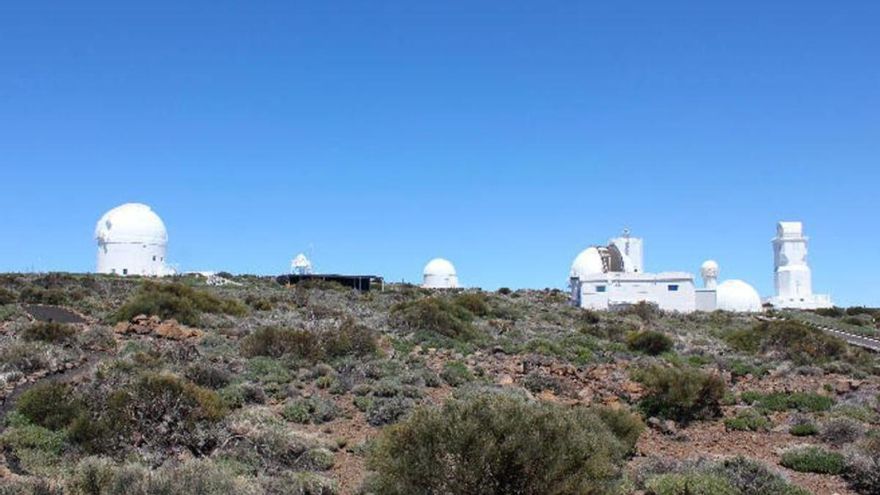
Did you know that the Sun has its own frequency and that it beats, like a heart, every five minutes? This is just one of the secrets of the Universe that have been discovered since the beginning. Teide Observatoryan international scientific center and an essential visit within the spectacular landscapes what to see in Tenerife.
A trip to Tenerife It is an opportunity to enjoy the sun and the beach, but also much more. Among the long list of what to do in tenerife You can not miss a walk to the summit of the Teide, the highest peak in Spain and an active volcano full of secrets to discover. He Teide Observatory is located to enjoy one of the best skies in the world, to visit Tenerife like never before and learn about some of the most impressive discoveries on the planet from its international center.
Volcano Teide is a company specialized in activities in the Parque Nacional del Teide, leader in unique and immersive routes such as its guided route through the Teide Observatory to discover this spectacular scientific center in a pleasant, close way, with all the curiosities of Teide and the activity of its researchers.
The visit to the Telde Astronomical Observatory offers the opportunity to feel like a scientist for a day, since Volcano Teide offers a personalized visit with information on the importance of Canary Islands skythe telescopes of the Tenerife Observatory and the different projects of the Institute of Astrophysics of the Canary Islands, the institution that manages this solar observatory. In this guided visit, Volcano Teide brings all the peculiarities of the Tenerife sky closer together, with an astrophysics workshop where specialized guides invite you to put yourself in the shoes of a scientist.
It is an obligatory visit within the long list of what to do in tenerifebecause few places in the world allow to observe the Sunspots and the sun flares through two solar telescopes. Know and discover in a big way the Teide is an experience that includes a visit inside a night telescopewith an impressive performance and an exciting story.
The English astronomer Piazzi Smyth visited Tenerife on a scientific expedition and had no doubts as to which was the perfect location to enjoy the sky of the Canary Islands. The Teide Observatory began operating in 1964, and is located in one of the better skies of the world.
He Teide Astronomical Observatory It focuses its scientific activity on solar observation and robotic astronomy, thanks to a large number of solar and night telescopes owned by different European countries. The Tenerife Observatory contributes to science with an average of one daily scientific publication, which places it as one of the most prolific centers for new international discoveries.
By day and by night. Tenerife is one of the international ‘Starlight’ destinations, a seal that accredits the quality for the astronomical observation of a few privileged locations in the world. For see the stars in Tenerife, Volcano Teide also has among its proposals another visit with accredited guides that bring visitors closer to the secrets of the Universe with professional telescopes in the pure and clean sky of the Teide National Parkspecifically in the parking lot of the Teide Cable Car base station.
On this other visit from astronomical observation on Teide it is possible to contemplate 83 of the 88 officially recognized constellations and in summer, from the clear vision of the Milky Way. On full moon nights, from the starry sky of Tenerife you can see the craters, mountain ranges and other lunar wonders.
Tenerife, one of the best skies in the world
Tenerife is sea, volcano, coast and mountain, an island that has it all and one of the favorites in Spain in terms of number of visitors due to its wide offer that makes all kinds of profiles fall in love. A trip to Tenerife It is much more than sun and beach, it is a star trek an international astronomical destination, a paradise from coast to summit, with almost half of its surface within the Canary Islands Network of Protected Natural Areas and, much of it also within the Natura 2000 Network.
Tenerife It is a unique island, and home to hundreds of plants and animals that have survived hundreds of years in its inaccessible ravines, a refuge for some of the most endangered species in Europe. The importance and ecological wealth of Tenerife is measured in hundreds of endemic species and unique animals in the world, which remain on this planet thanks to the protection of space, a warm paradise full of nature.
The island has several international recognitions from Unesco, which certify its natural and cultural wealth. He Teide National Park is World Heritage, as well as the city of San Cristóbal de La Laguna and the Anaga Massif, cataloged within the Worldwide biosphere reserve.
















